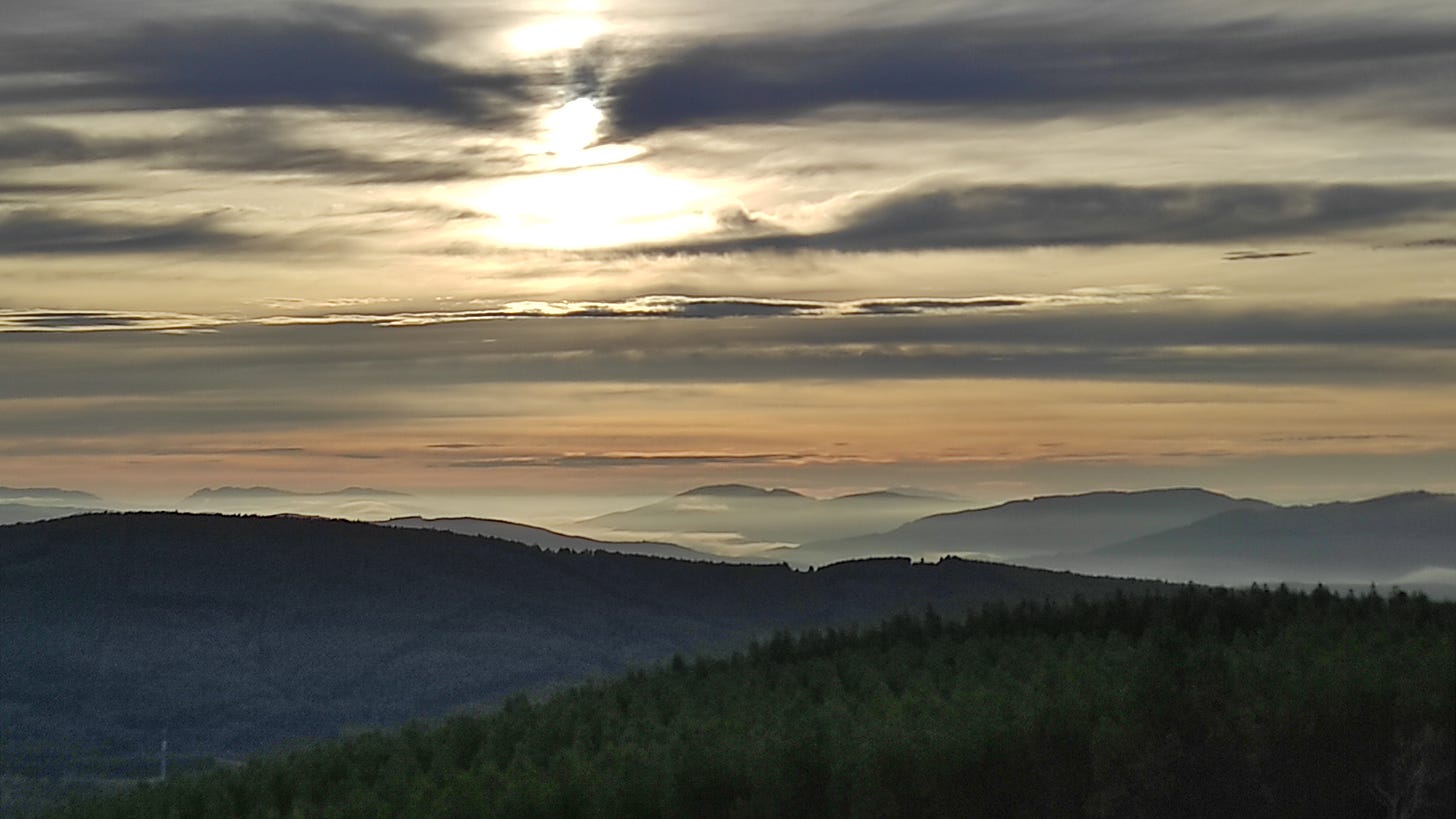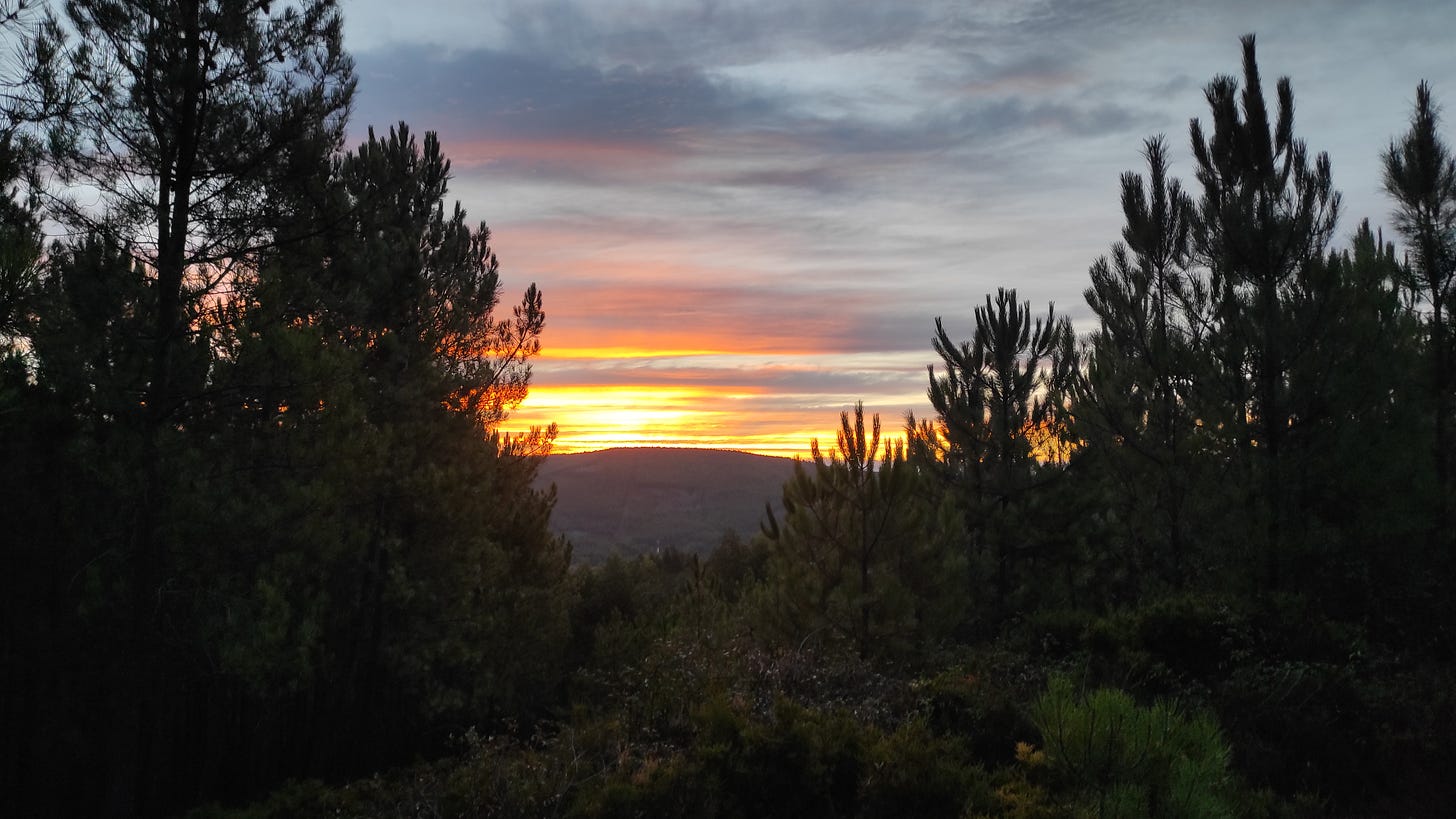Apologies for the late posting. The toddler is out of kindergarten for the summer holidays, which means I’m full-time dadding again for the remainder of August. Still, I found some time yesterday to write most of this piece during his nap and a little on the morning shepherd round. Without further a do:
With the help of our farm volunteer, we’ve harvested approximately 40 kg of pears! These came from three trees, two of them on our land and the other one on the abandoned neighboring property. Now we have jar upon jar of dried pear (last year we only got two jars), and a nice amount of pear compote. It’s also the season of Blackberries — which may be the longest fruit season of them all — so we’ve also been making kilograms of blackberry jam, enough that in a normal year, we might even stretch it out for the whole inter-season period, though with the five children and four adults who will soon be living on the farm, we’ll see how long it lasts.

The freezer is full of things that we’ve harvested from the land now, which makes us feel like we’re finally getting the most out of it, and we’re even planning on buying a fridge freezer combo to absorb next year’s harvests.
I'm sitting on the mountainside as I write this, grazing the sheep on heather and other shrubby plants that grow plentifully between the swathes of plantation forest. Our current volunteer is a student of ecology, who spent six weeks in the lake district as part of a post graduate course about human impacts on the environment, particularly the sheep industry.
Something interesting that she told me about from her time in the Lake District is that the sheep there are hefted to the land, which means that there is an area which they understand to be their home, and they (generally) will not leave this space, which makes managing them much easier, especially in a predator free environment.
The concept of a heft is fascinating to me. As it happens, that is precisely what I have inadvertently done with my sheep. During their first months here, I had them confined to certain areas by tethering Crusoe to trees, giving her enough space to graze, and Frankie would stay close to her.
There are impracticalities to this method — such as getting tangled in trees — and required even more attention throughout the day to be sure that all was well and to move them so as not to over-graze an area.
There were one or two occasions when Crusoe would somehow become disconnected from her line, and then the two sheep would roam free. I was curiously surprised to find that this never resulted in a catastrophe; the sheep would simply find a quiet spot and lay down there, when I would search for them and call out, their bells would ring as they listened for me, and I would go to collect them.
I realized that the sheep need to live a certain way in order to feel safe and comfortable; they need a familiar routine, cozy places where they can relax and chew cud, a balanced diet, and the best way for them to get all of these things is to give them as much control over their lives as possible.
With that in mind, I had a notion that if I were to simply let them run free, then they wouldn't simply run away as I'm sure they would have at the beginning. So one morning, instead of tethering Crusoe, I walked them down onto a corner of the property, the furthest away from any human inhabited areas, and dropped the leash on the ground.
I climbed up the stone terraces and watched down through the trees to see what would happen. They wandered around for a bit, browsing on low hanging leaves, and showed no sign of running off, so I climbed the remainder of the way back up the hill and kept an ear focused on the sound of their bells.
When I went back down to search for them later, I found them tucked away in an extremely hidden spot behind some blackberry bushes, if I hadn't already found the spot myself while exploring, I wouldn't have known that they were there.
Ever since then, their routine has looked like that; spend the first few hours of the day with the chickens, eating hay, then around eight or nine, out of the pen and down the hill into the valley, where they would graze for a few hours, then off to their Bramble Hollow as I like to call it, after the heat of the day, out again for another few hours of grazing, in the early evening they would come back to the top of the hill to rejoin the chickens in the pen.
It's a system that worked well in many ways, but with the advent of high summer, the active growing season has come to an end, leaving less grazable material for the sheep, and they tend to come up the hill much earlier in the day, even during the hot hours, looking for food.
That was a strong signal that things need to change, so I've taken up a much more active role in their management again, much like during the spring period, when the rich pastures were constantly threatening to bloat the sheep. This time around, I get out of the shack before dawn, and at the first hint of first light, I have the sheep out of their pen.
We'll walk together through the village and up the hill, then I'll drive them yet further up and onto the mountainside, where there are lush pastures — touched only by the wild animals — once there, I release them to eat to their heart’s delight for an hour and a half, then coax them back to me and drive them down the mountainside by a different track which leads to the other side of our valley. From there, we walk at a brisk pace back onto the heft.
With this hour and a half of good grazing in their bellies, the sheep are happy to wander around the heft for a few hours, in no hurry to destroy the remaining balance of nature, and then they will go to their hollow and chew cud for much of the day. In the evening time, after Jackie finishes work and takes the kid, I'll try to find time to get the sheep off heft again for a night cap graze.
Though this method of sheep management requires more human input and definitely detracts from other projects, it is an essential adaptation, at least for the summer months. The reality is that I will need to invest even more of my time into being a shepherd next year, since the sheep will be lambing soon, but eventually, the forest pastures will mature and the inputs that the sheep require will go down drastically.
The crucial responsibility of any shepherd is to take seriously the best interests of the sheep, but also the land. Looking at the results of a small hefted flock on five acres of forest, I can see the result; a year of stunted growth. During the next years, I will take action to encourage a more diverse and bountiful undergrowth layer within the closed canopy forest, and begin the process of growing new hedged in forest pastures with a good mix of trees and brush, as these plans materialize, the ability of the land to support livestock will improve exponentially.
In the meantime, the sheep will need to spend ever more time off of their heft, under my watchful eyes, to make sure that they get enough healthy nutrition, whilst safeguarding the condition of the land. It will be a balancing act, but the joy of shepherding, up in the hills, is such a peaceful act that it is its own reward. And as the sheep begin to reward us in other ways; with more wool, milk for cheese and cream, lanolin, and yes, ram lambs will likely have to be slaughtered and will provide us with an even more diverse and plentiful diet.







Thank you for writing this. I can feel the joy in your discoveries.